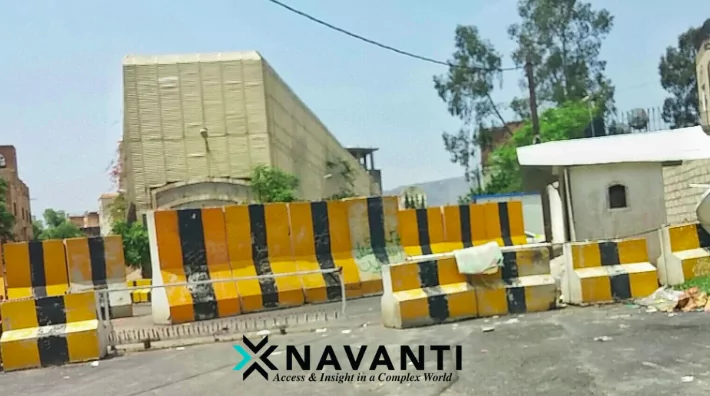Spot Report: Houthis, Hamas, and the Growing Concerns in the Middle East by Navanti News

The Department of Defense today announced it intercepted drones and missiles from Yemen, intensifying the already escalating tensions in the Middle East, where Israel finds itself in a confrontation with the Axis of Resistance. This coalition comprises Hezbollah in Lebanon, Shia groups in Iraq and Syria, and the latest entrant, Ansar Allah (Houthis) in Yemen.
The leader of Ansar Allah, Abdulmalik Houthi, has issued a stark warning, emphasizing that any U.S. intervention in Gaza will trigger a rapid and coordinated response involving drones, missiles, and other military options, in collaboration with the Axis of Resistance.
Today’s interception of drones and missiles from Yemen comes without an explicit claim of responsibility from the Houthis or any Yemeni group. This absence of a claim is a reminder of a similar situation in 2016 when cruise missiles were fired from Yemen targeting the USS Mason (DDG-87) and USS Ponce (AFSB(I)-15) of the United States Navy. Back then, the Houthis did not claim responsibility, nor did any other Yemeni group.
In addition to the lack of confirmation from the Houthis, today’s event may suggest that Ansar Allah may have chosen to avoid firing missiles over Saudi Arabia, opting for a Red Sea route. This strategic decision may be aimed at preserving the ongoing peace talks between Houthi-controlled Sana’a and Riyadh.
The relationship between Ansar Allah and Hezbollah raises the possibility of Houthi fighters engaging with Israel. The Houthis’ hostility toward Israel has been evident in their past actions, such as missile strikes in the United Arab Emirates, which garnered significant attention from the Israeli press. These attacks demonstrated the Houthis’ capability to strike distant targets.
An analysis of Houthi weaponry, including long-range drones and missiles, has raised concerns about their potential to target Israel. The recent unveiling of the Typhoon Long Range Ballistic Missile by the Houthis, coinciding with Hamas’s naming of their military operation “Aqsa Typhoon,” further highlights this issue.
The exact range and capabilities of Houthi weaponry are complex to determine. However, their past actions in the region, such as attacks on Saudi Arabia and the potential use of water-borne drones, contribute to concerns.
Houthi’s cyber warfare capabilities, evidenced by actions of Houthi hackers, raise the possibility of cyber conflicts with Israel. Additionally, the use of cryptocurrency for funding and public donation events to support Hamas is another notable aspect of Houthi support.
For now, the Houthis have been actively communicating through various means, including media outlets, influencers, and public rallies. They also employ traditional short poetry, known as Zawamil, to rally supporters in solidarity with Hamas amidst the escalating tensions in the Middle East.

